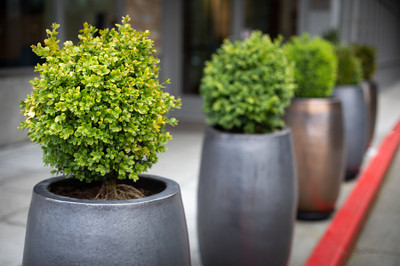Houseplants & Pets: Toxic Plants to Avoid and Beautiful Pet-Safe Alternatives
Posted by Jason Wyrwicz on Nov 25th 2025
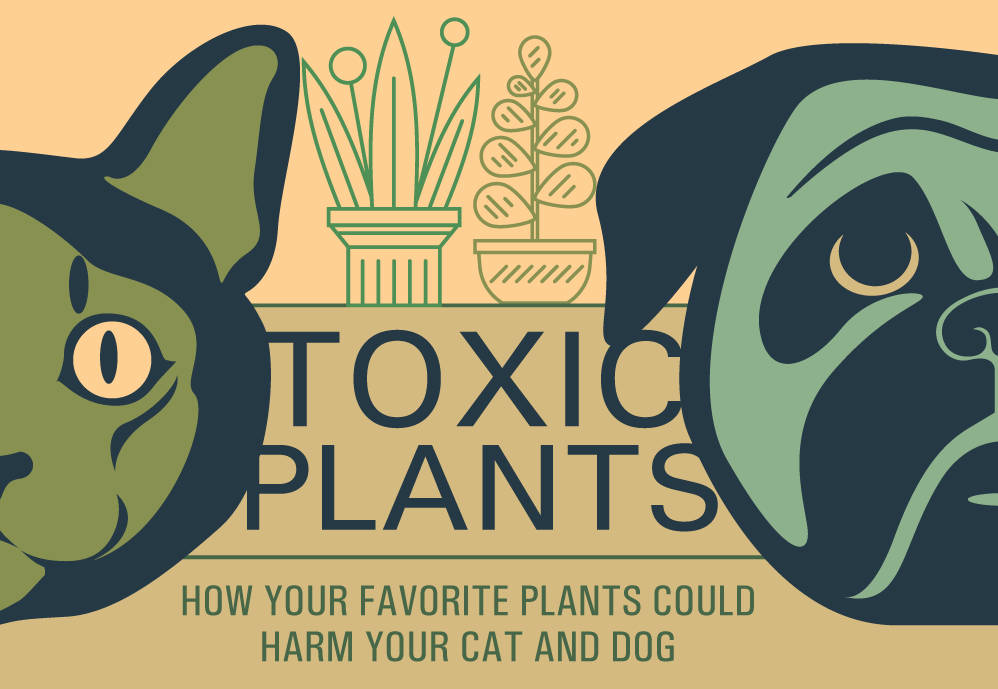
Plants bring life, texture, and calm to a space, but if you share your home with a cat or dog, plant shopping comes with an extra layer of responsibility. Quite a few common houseplants contain substances that can make pets very sick. The good news is that there are also plenty of stunning, pet-safe options to choose from.
This guide combines the essentials from our toxic-plant and pet-safe-plant articles. First, we’ll look at plants that can harm pets and what to do if your animal ingests one. Then we’ll walk through a curated list of pet-friendly houseplants that still deliver plenty of style.
Why Some Houseplants Are Dangerous to Pets
Cats and dogs often chew on leaves or stems out of curiosity, boredom, or an upset stomach. Many plants protect themselves with natural chemicals that are harmless to humans in small amounts but can be risky - or even fatal - for animals.
Depending on the plant and the amount eaten, symptoms can range from mild stomach upset to seizures, organ failure, or sudden collapse. That’s why it’s important to know what’s growing in and around your home.
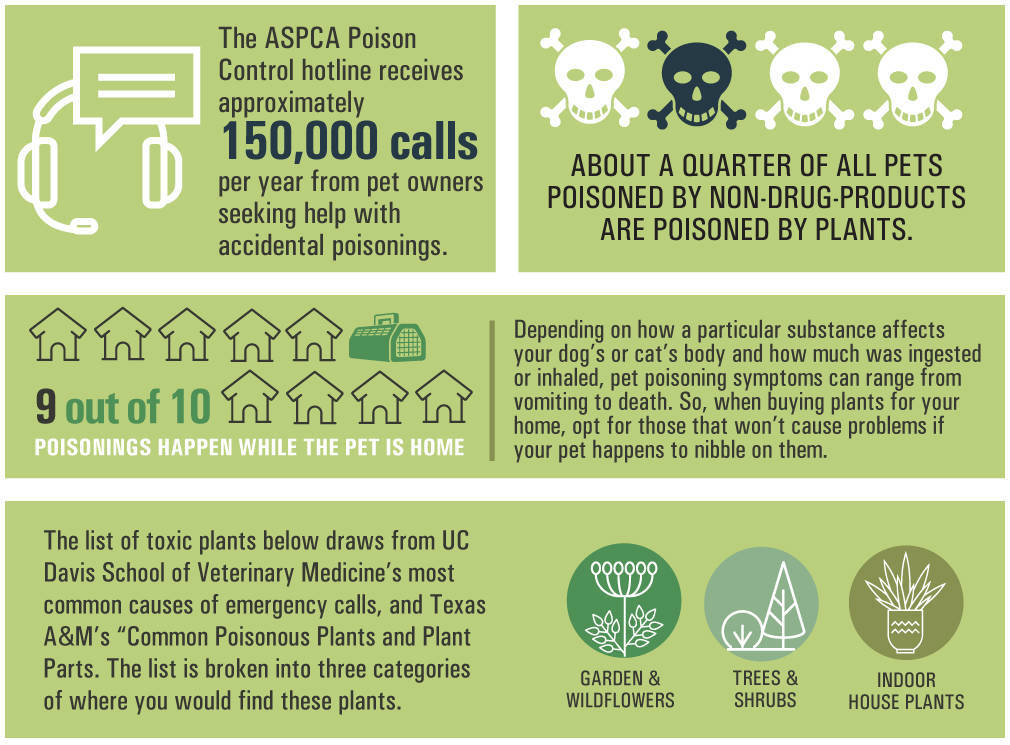
Examples of Toxic Plants That Can Harm Pets
This is not a complete list, but these plants are commonly mentioned in veterinary toxicology reports and pet poison hotlines. If you own any of them and have pets, consider rehoming the plants or placing them in an area that animals cannot access.
1. Castor Bean (Ricinus communis)
The dramatic foliage and spiky seed pods hide ricin, an extremely powerful toxin. Chewing just one seed can cause severe illness.
- Toxic to: Dogs and cats
- Toxic parts: Seeds and leaves
- Possible symptoms: Vomiting, bloody diarrhea, dehydration, tremors, seizures
2. Caladium (Elephant Ear, Angel Wings)
Caladium’s colorful leaves contain sharp calcium oxalate crystals. Even a small bite can cause intense burning in the mouth and throat.
- Toxic to: Dogs and cats
- Toxic parts: Leaves
- Possible symptoms: Drooling, vomiting, pawing at the mouth, difficulty swallowing
3. Lilies (Lilium species)
True lilies are extremely dangerous to cats. Pollen, petals, leaves, and even the water in a vase can trigger kidney failure.
- Toxic to: Cats (severely)
- Toxic parts: All parts of the plant
- Possible symptoms: Vomiting, lethargy, loss of appetite, kidney damage
4. Dumbcane (Dieffenbachia)
When chewed, this common office plant releases tiny needle-like crystals that irritate the mouth, tongue, and throat.
- Toxic to: Dogs and cats
- Toxic parts: Leaves and stems
- Possible symptoms: Intense oral pain, drooling, vomiting, swelling in the mouth or throat
5. Rosary Pea (Abrus precatorius)
Its striking red-and-black seeds contain abrin, a toxin even more potent than ricin when chewed.
- Toxic to: Dogs and cats
- Toxic parts: Seeds
- Possible symptoms: Severe vomiting, tremors, breathing difficulties, organ failure
6. Larkspur
Young larkspur plants in particular can cause serious neurological symptoms if eaten.
- Toxic to: Dogs and cats
- Toxic parts: Entire plant
- Possible symptoms: Stiffness, tremors, drooling, paralysis, heart or respiratory failure
7. Foxglove (Digitalis purpurea)
Foxglove leaves contain cardiac glycosides—compounds that affect heart rhythm and can quickly become life-threatening.
- Toxic to: Dogs and cats
- Toxic parts: Entire plant
- Possible symptoms: Vomiting, irregular heartbeat, weakness, collapse
8. Autumn Crocus (Colchicum autumnale)
The bulbs and flowers contain colchicine, a substance that can damage the liver, kidneys, and gastrointestinal tract.
- Toxic to: Dogs and cats
- Toxic parts: Bulbs and flowers
- Possible symptoms: Vomiting, bloody diarrhea, abdominal pain, seizures, organ damage
9. Black Locust (Robinia pseudoacacia)
Chewing the bark, leaves, or seedpods can leave pets weak and unsteady.
- Toxic to: Dogs and cats
- Toxic parts: Bark, leaves, seeds
- Possible symptoms: Depression, weakness, dilated pupils, vomiting
10. Yew (Taxus species)
All parts of the yew plant, especially the needles and seeds, contain compounds that interfere with heart function.
- Toxic to: Dogs and cats
- Toxic parts: Needles, seeds, bark
- Possible symptoms: Drooling, trembling, seizures, sudden heart failure
11. Oleander
Oleander is highly toxic. Even a small amount of leaves or flowers can affect the heart.
- Toxic to: Dogs and cats
- Toxic parts: Entire plant
- Possible symptoms: Vomiting, diarrhea, slowed heart rate, collapse, death
What to Do If Your Pet Eats a Toxic Plant
If you think your pet has chewed or swallowed part of a toxic plant, fast action matters.
- Stay as calm as you can so you can act clearly and quickly.
- Contact your veterinarian or an emergency animal hospital right away.
- Do not try home remedies or induce vomiting unless a professional specifically instructs you to do so.
- Take a photo or sample of the plant and note roughly how much your pet may have eaten and when.
- Keep your pet quiet, warm, and under close observation while you arrange care.
Simple Habits to Keep Pets Safe Around Plants
- Label or list every plant you own so you can quickly identify it in an emergency.
- Place risky plants on high shelves, in hanging planters, or behind closed doors.
- Check your garden and yard for toxic shrubs, trees, or groundcovers and fence them off or remove them.
- Redirect curious chewers toward pet-safe grass, toys, or treats.
- Keep your vet’s number and a 24-hour emergency clinic number in an easy-to-find place.
Pet-Safe Houseplants That Still Look Amazing
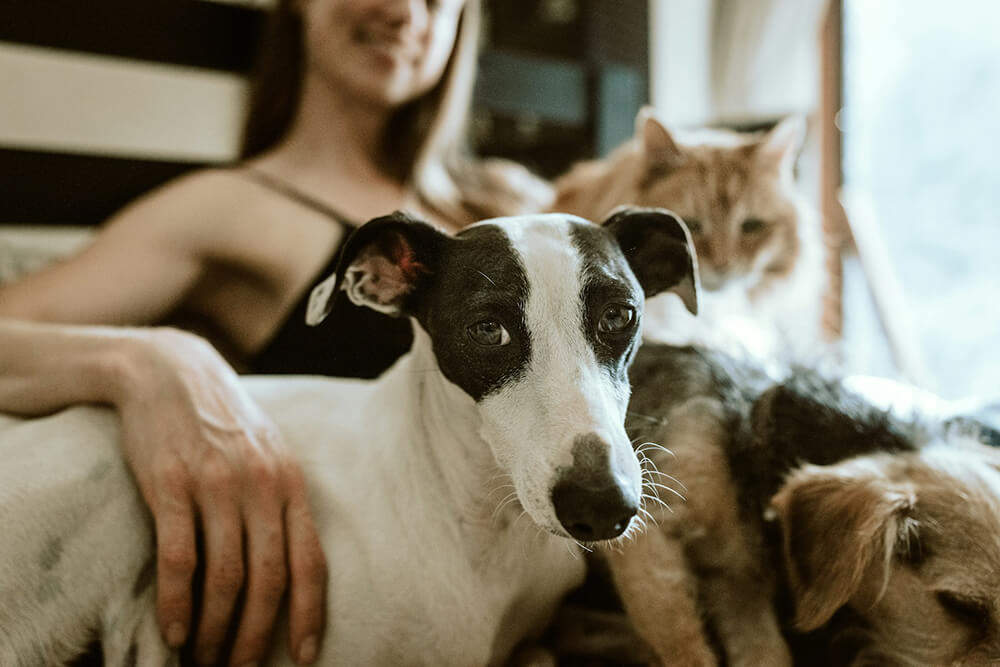
Fortunately, “pet-safe” does not mean “boring.” The plants below are considered non-toxic to cats and dogs when ingested in small amounts. Of course, every animal is different, so it’s still smart to discourage chewing.
#1 Money Tree (Pachira aquatica)
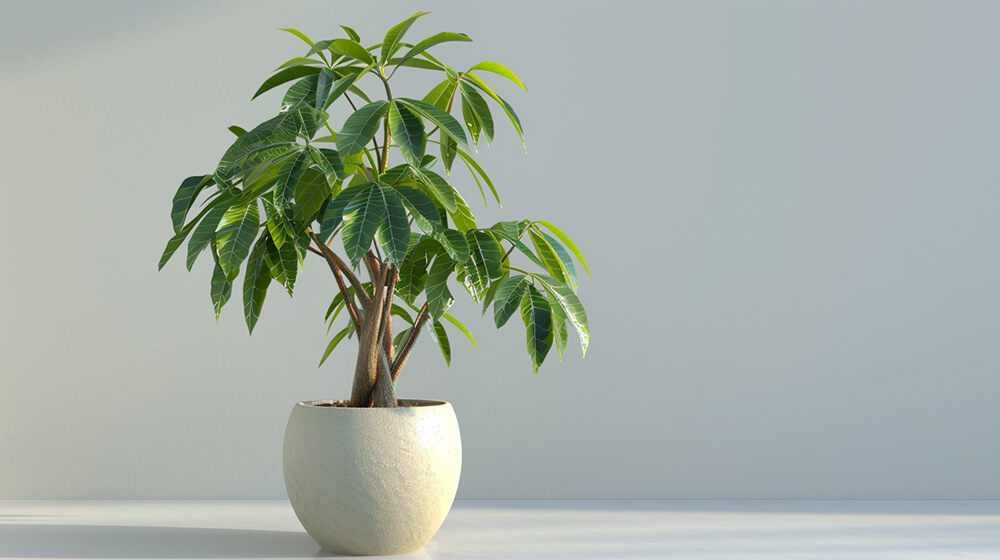
Money trees are known for their braided trunks and lush green leaves. They’re forgiving and low maintenance, making them ideal for busy households.
- Thrives in bright, indirect light.
- Water when the top inch of soil feels dry.
- As the plant grows, move it into a wider, stable planter to prevent tipping.
#2 Hoya Plants
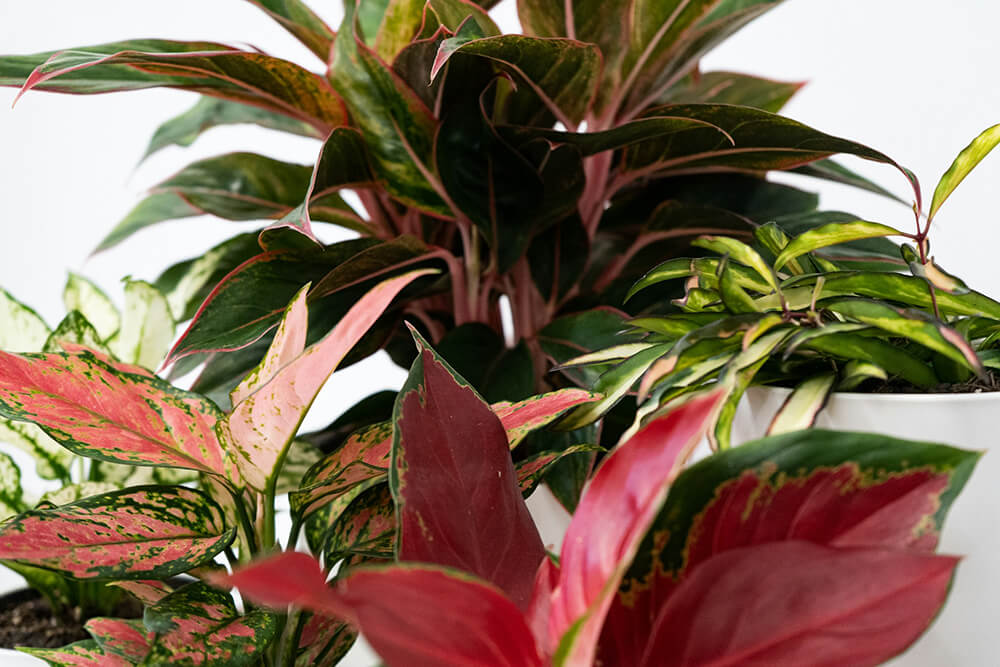
Hoya plants, sometimes called wax plants, have thick, often glossy leaves and sometimes star-shaped flowers. They’re excellent for shelves and hanging planters.
- Enjoy bright, indirect light.
- Let the soil mostly dry between waterings.
- Start in a smaller pot; repot into a larger planter as vines fill out.
#3 Bromeliad (Bromeliaceae)
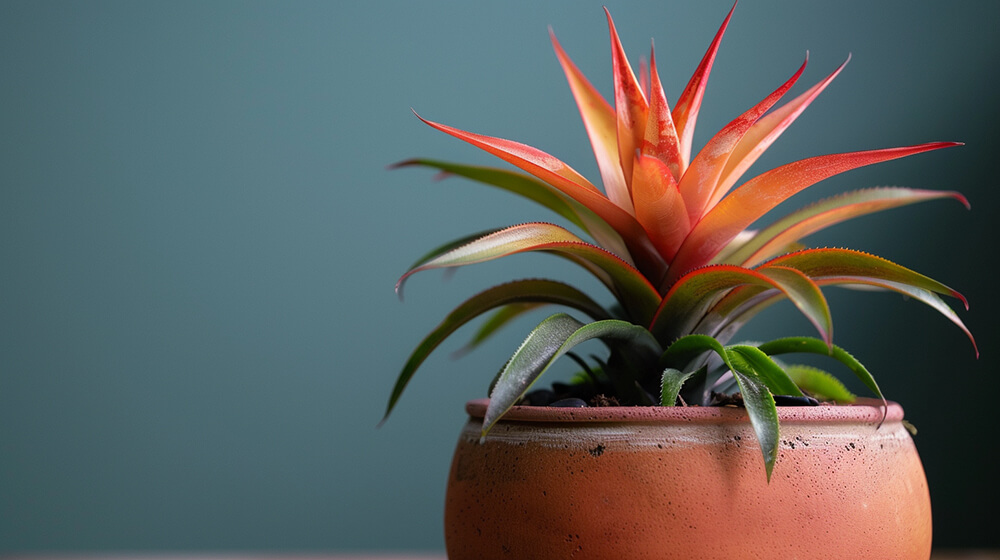
Bromeliads offer vibrant, long-lasting color and a compact shape. Some varieties can even grow attached to wood or decor pieces with minimal soil.
- Prefers bright, indirect light.
- Water sparingly—many varieties like to be misted rather than heavily watered.
- Pair with a modest-sized indoor planter so the plant, not the container, is the star.
#4 Orchids (Orchidaceae)

Orchids provide a sophisticated touch and come in many colors. Most common varieties are considered non-toxic to cats and dogs.
- Do best in bright, indirect light.
- Water or mist about once a week; avoid waterlogged roots.
- Use a plastic inner pot with drainage and slip it into a decorative outer planter.
#5 Spider Plant (Chlorophytum comosum)
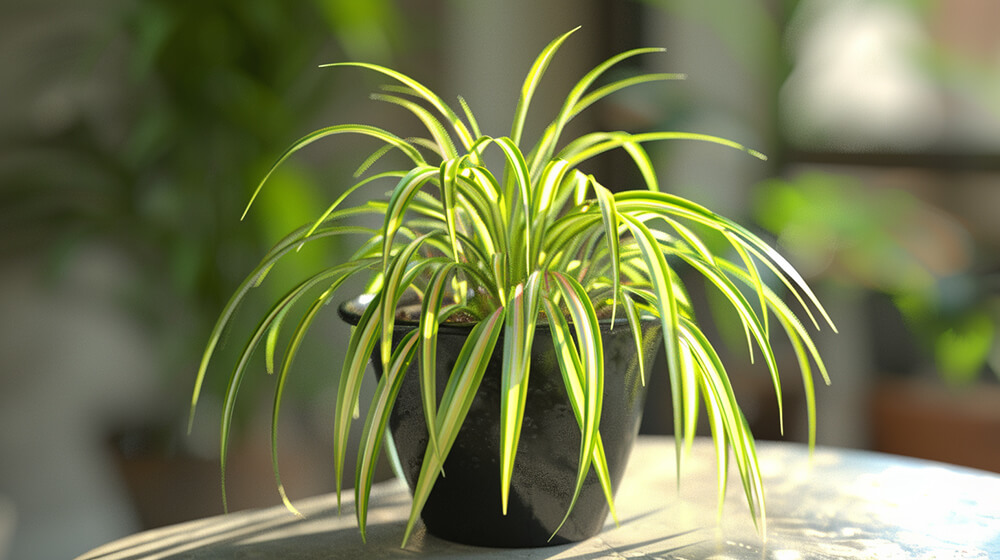
Spider plants are classic, easy-care houseplants known for their arching leaves and baby plant “spiders” that dangle from long stems.
- Tolerates a range of light conditions, but prefers bright, indirect light.
- Keep soil lightly moist; let the surface dry slightly between waterings.
- Looks great in hanging planters or on floating shelves.
#6 Venus Flytrap (Dionaea muscipula)
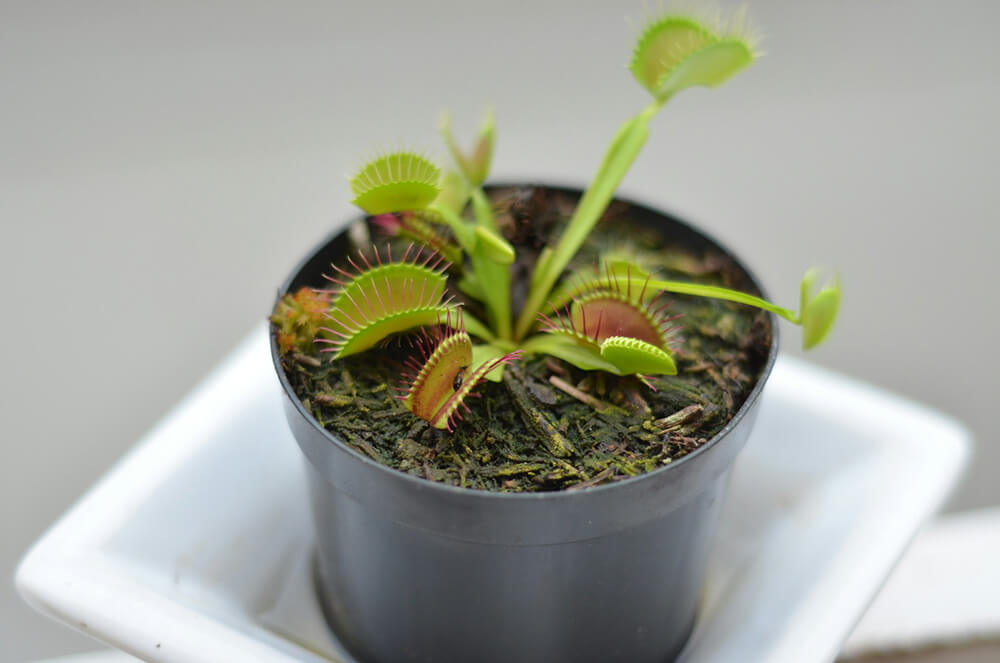
Venus flytraps bring a bit of drama to your plant collection and can help with insect control. Despite their reputation, they’re non-toxic to pets.
- Needs several hours of direct sun or strong artificial light each day.
- Water with distilled or rainwater; tap water can be too mineral-heavy.
- Choose a deeper pot so the roots have room to grow downward.
#7 Polka Dot Plant (Hypoestes phyllostachya)
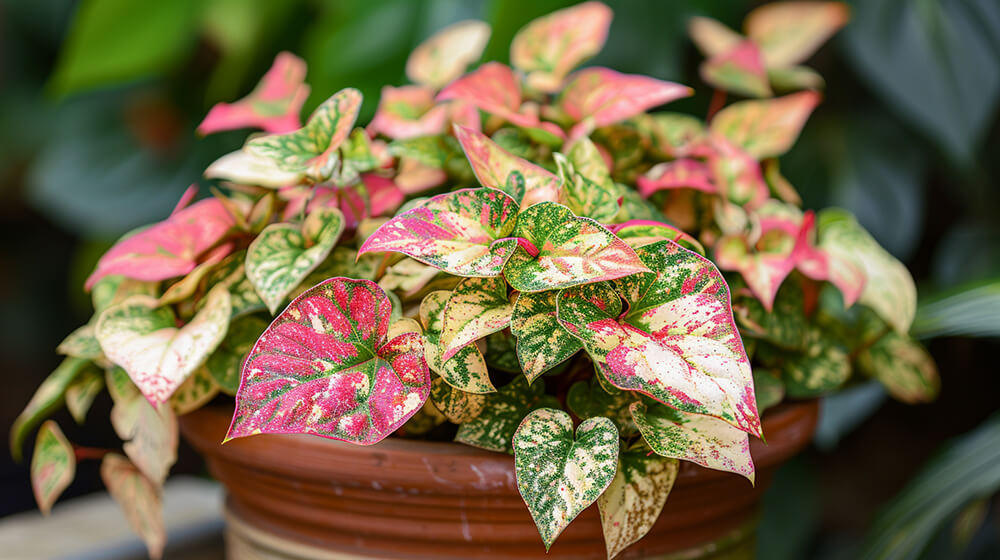
Also called the freckle-face plant, this compact houseplant is known for its speckled pink, red, or white foliage. It’s perfect for adding color to smaller spaces.
- Thrives in bright, indirect light.
- Prefers consistently moist soil that never becomes soggy.
- Great match for small tabletop planters or grouped arrangements.
The Bottom Line
Plants and pets can absolutely coexist - you just need to be intentional about what you bring into your home. Start by identifying and removing or isolating the most dangerous species, then replace them with pet-safe houseplants like money trees, hoyas, bromeliads, orchids, spider plants, Venus flytraps, and polka dot plants.
Once you’ve chosen your greenery, pair it with planters that complement your decor and keep your plants stable and secure. With the right combination of safe plants and thoughtfully selected containers, you can enjoy a lush, stylish home that’s as comfortable for your pets as it is for you.


